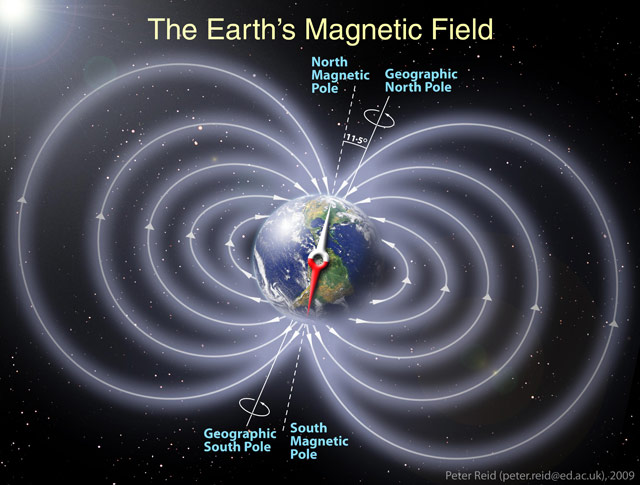The polar flip

According to data collected by a European satellite array, the Earth’s magnetic field is shifting and weakening at a greater pace than previously thought. One of the reasons for the shift might be that the magnetic North and South poles are swapping positions.
Scientists already know that magnetic north shifts. Once every few hundred thousand years the magnetic poles flip so that a compass would point south instead of north. While changes in magnetic field strength are part of this normal flipping cycle, data from Swarm have shown the field is starting to weaken faster than in the past. Previously, researchers estimated the field was weakening about 5 percent per century, but the new data revealed the field is actually weakening at 5 percent per decade, or 10 times faster than thought. As such, rather than the full flip occurring in about 2,000 years, as was predicted, the new data suggest it could happen sooner.
You can read up on geomagnetic reversals on Wikipedia. A short sampling:
These periods [of polarity] are called chrons. The time spans of chrons are randomly distributed with most being between 0.1 and 1 million years with an average of 450,000 years. Most reversals are estimated to take between 1,000 and 10,000 years. The latest one, the Brunhes-Matuyama reversal, occurred 780,000 years ago. A brief complete reversal, known as the Laschamp event, occurred only 41,000 years ago during the last glacial period. That reversal lasted only about 440 years with the actual change of polarity lasting around 250 years. During this change the strength of the magnetic field dropped to 5% of its present strength.





Stay Connected